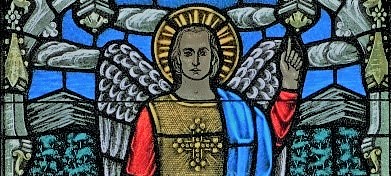A History Lesson
The image of Mary as Queen Mother is directly related to the first official Marian dogma defined
by the Church: Mary’s status as Mother of God. The Greek word for the title is Theotokos, which
literally means “God-bearer.” That title is one of the oldest and most commonly used titles for
Mary, with Christians using it in the very first centuries of the Church. The title also appears in one
of the oldest known Christian prayers, the Sub Tuum Praesidium (“Beneath Your Protection”), an
early form of the Memorare that dates to the third century. The first Christians called Mary the
“Mother of God” without hesitation. There was scriptural precedent, and it seemed logical. If Jesus
was God, and Mary was his mother, then that made her the Mother of God.
That sort of logic depends on a principle called the “Communication of Idioms”. According to that
principle, whatever one says about either of Christ’s natures can be truly said of Christ himself.
That’s because His two natures, the divine nature and the human nature, were united in Him. He
is one divine person.
In the fifth century, however, some people raised the same objections to the title that many non-
Catholics raise today: They argued that the title “Mother of God” implied that Mary was the
“originator of God”. Those objectors said that they could accept the title “Mother of Christ”, but
not “Mother of God”. At the heart of those objections, however, was an objection to the unity of
Christ’s two natures. Mary, they claimed, gave birth only to Christ’s human nature, not his divine
nature. The Church, led by Pope Celestine I and St. Cyril of Alexandria, disagreed. As St. Cyril
pointed out, a mother gives birth to a person, not a nature. Accordingly, Mary gave birth to Jesus
Christ, who was and is a divine person. Although Mary did not “originate” or “generate” God,
she did bear Him in her womb and give birth to Him. She was God’s mother.
The controversy over Mary’s title as “Mother of God” was addressed in 431 A.D. at the Council of
Ephesus. There, more was at stake than simply defending Mary’s title. The Christian teaching
about Christ’s two natures was the real issue. The Church wanted to settle one question: Was Jesus
one person or two? Rejecting the teaching of the heretic Nestorius, the Church declared that Jesus
is one divine person, with two natures—his mother’s human nature and his Father’s divine
nature. Mary did not give Jesus his divine nature or his divine personhood—those He possessed
from all eternity as the only begotten Son of the Father. But she also didn’t just give Him His
flesh: She gave birth to the whole person. She gave birth to Jesus Christ, both God and man. That
is what we confess every time we say the Apostles’ Creed.
Calling Mary “Mother of God” states a truth that must be stated in order to protect an essential
truth about Christ. In a similar way, that’s what all Mary’s queenly predecessors did for their sons.
One of the three essential tasks of the Queen Mother was to be a sign of her son’s legitimacy. She
was the link between his father, the former rightful king, and her son, the present rightful king.
Likewise, Mary as the virginal “Mother of God” is the link between her Son’s humanity and divinity.
She is the sign that He is both God and man.


